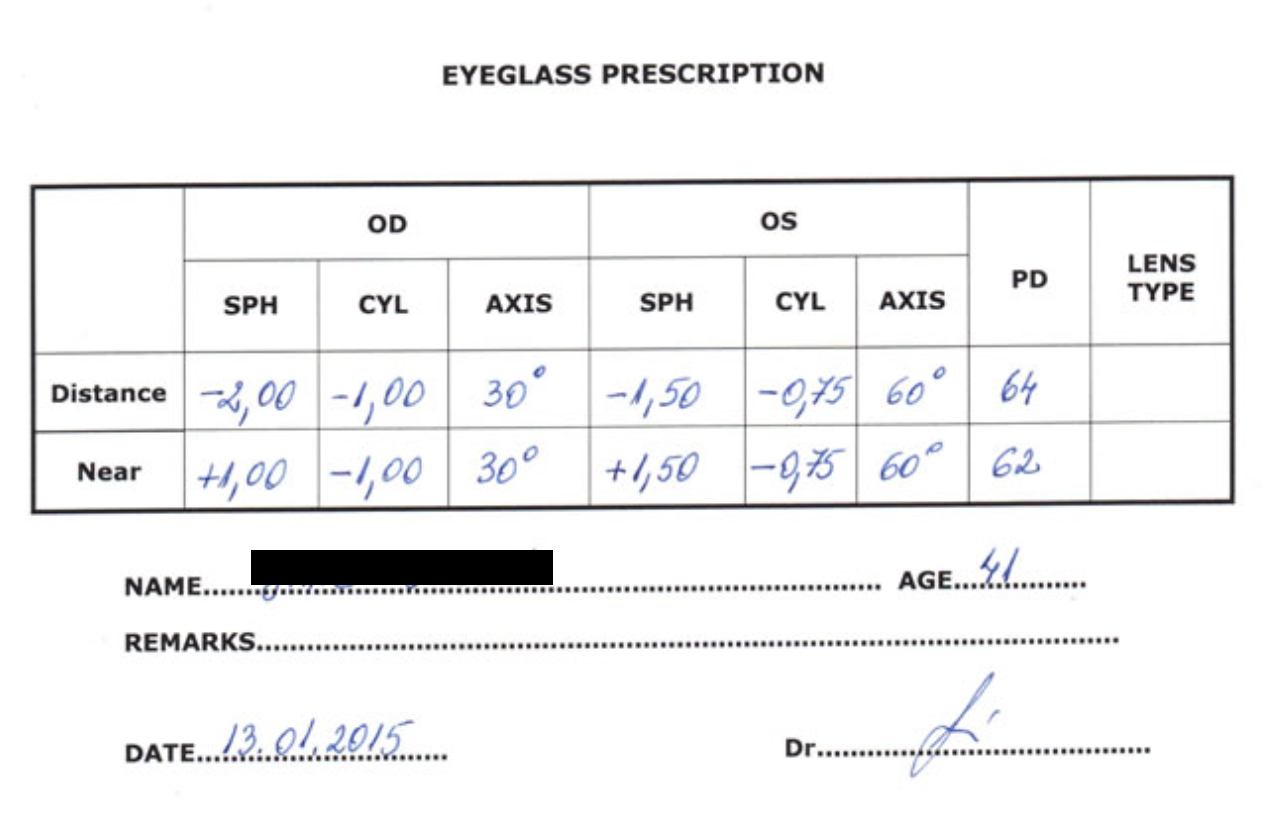Contact Lens Vs Optical Frames PrescriptionUpdated a year ago
When it comes to vision correction, understanding the differences between a prescription for contact lenses and one for optical frames is crucial. It is important that you have a valid contact lens prescription when buying contact lenses and not use your optical frame prescription.
Contact Lens Prescriptions
A contact lens prescription, while also including SPH, CYL, and Axis (for wearers with astigmatism), contains additional information critical for the fitting and comfort of contact lenses:
- Base Curve (BC): Indicates the curvature of the contact lens, matching the curvature of your eye. Note: Dimple Color has a BC of 8.70mm
- Diameter (DIA): Specifies the width of the contact lens, ensuring it covers the cornea properly. Note: Dimple Color has a DIA of 14.20mm
- Lens Material and Brand: Each brand and material can affect comfort and fit, making these specifications necessary.
- Power: While similar to SPH, the power for contact lenses may differ slightly due to their placement directly on the eye.

Optical Frame Prescriptions
An optical frame prescription is designed for eyeglasses. It includes the following components:
- Sphere (SPH): Indicates the lens power needed to correct nearsightedness (myopia) or farsightedness (hyperopia).
- Cylinder (CYL): Specifies the lens power required to correct astigmatism.
- Axis: Indicates the orientation of the astigmatism correction in degrees.
- Addition (ADD): Found in multifocal lenses, indicating the additional power for reading or close-up work.
- Pupillary Distance (PD): Measures the distance between the centers of your pupils, ensuring proper lens alignment.

Importance of Using the Correct Prescription
Using an optical frame prescription to buy contact lenses is not advisable for several reasons:
- Fit and Comfort: Contact lenses require precise eye curvature and size measurements to ensure they fit comfortably and securely. An incorrect fit can lead to discomfort, irritation, or even eye damage.
- Vision Accuracy: The power needed for contact lenses can differ from that of glasses due to the distance between the lens and the eye. An optical frame prescription does not account for this variation, potentially leading to incorrect vision correction.
- Eye Health: Contact lenses sit directly on the eye, so the material and fit must be appropriate to allow adequate oxygen transmission and avoid complications such as dry eye or infections.